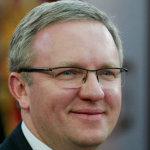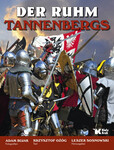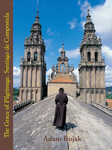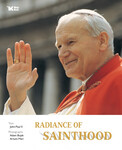Chwała Grunwaldu (ang) // The glory of Grunwald
| liczba stron: | 296 |
| obwoluta: | tak |
| format: | 240x315 mm |
| papier: | 170 g kreda błysk |
| oprawa: | twarda |
| data wydania: | 04-05-2010 |
| ISBN: | 978-83-7553-086-5 |
 dodaj do przechowalni
dodaj do przechowalni
Fotografie: monumentalny album (296 stron, ponad 300 fotografii) wydany w roku 600-lecia bitwy pod Grunwaldem z wykorzystaniem zdjęć z inscenizacji bitwy w obiektywie Mistrza Adama Bujaka. Opis fotograficzny działań wojennych od Krakowa po Malbork, z fotografiami ponad 40 zamków i warowni, m.in. Wawelu, tzw. Orlich Gniazd, Malborka, Gniewu, panoram, fotografie inscenizacji: wyprowadzenia wojsk, bitwy, zwycięstwa, wspaniałych krajobrazów z okolic Grunwaldu i z całej Polski.
Teksty: tekst główny jest dziełem historyka Uniwersytetu Jagiellońskiego prof. dr hab. Krzysztofa Ożoga. Artykuł, napisany przystępnym, przejrzystym językiem, oparty jest na najnowszym stanie wiedzy n/t wojny z Zakonem Krzyżackim 1409-1411. Wartki styl sprawia, że rzetelna wiedza naukowa przekazywana jest w sposób łatwy do przyswojenia. Z historycznym esejem wspaniale współgrają dwa ciekawe artykuły o współczesnej fascynacji grunwaldzką tradycją. Jeden z nich przedstawia początki i rozwój inscenizacji grunwaldzkiej. Drugi tekst prezentuje dzieje i działalność ruchu rekonstrukcji historycznej, którego przedstawiciele tak licznie goszczą co roku na polach grunwaldzkich. Wiele informacji dają też rozbudowane podpisy pod zdjęciami autorstwa współtwórcy albumu Leszka Sosnowskiego.
Album dedykowany jest pamięci niestrudzonych obrońców wartości chrześcijańskich i patriotycznych, tragicznie zmarłych w pobliżu Lasu Katyńskiego Lecha Kaczyńskiego i Ryszarda Kaczorowskiego.
1. Difficult neighbourhood: the conflict between Poland and the Order
2. Homeland
3. The enemy
4. The road
5. The knightly code
6. The reenactment
7. Knightly brotherhoods
8. The eve of the battle
9. The battle
10. The One who gave birth to God
11. The victory
12. Bibliography
III Diplomatic and martialpreparations of both parties for themilitary campaign of 1410
Both parties made use of the time of the trucefor military preparations for a new war, andfor ideological warfare and diplomatic effortsto win allies. Together with a group of intellectualsconnected to the Royal Chancellery,the Deputy Chancellor of the Crown, Mikołaj Trąba, preparedtwo memorials directed to the Christian world forthe purposes of a propaganda war, which were announcedin Opatów on 10th August 1409 and in Wolbórz on 9thSeptember of the same year, and sent out to Europeancourts. The documents refuted the charges against theking, namely that he wanted to destroy Christianity withthe use of pagans, at the same time accusing the TeutonicKnights of breaking the peace, seizing land, persecutionof neophytes and destruction of churches in Lithuania,and collaboration with followers of schisms. Following thethought of St Augustine, the Knights of the Cross werecalled the sons of the devil belonging to his realm. At thesame time, the memorials emphasised Jagiełło’s distinctionsin the mission of baptising Lithuania. Moreover,academics from the University of Kraków joined in theideological confrontation with the Teutonic Order. Theprofessor of canon law Stanisław of Skalbmierz prepareda lecture on the law of public war in form of a sermonDe bello iusto (On the just war), in the first half of 1410.The Kraków expert on canon law elaborated the theoreticalaspects of the most important questions connected tothe Polish-Teutonic conflict, fine-tuning the notion of justwar. In the light of his arguments, the war that Poland andLithuania conducted against the Order was just. Moreover,he justified the rights of Christian monarchs to makeuse of pagans in a justified war conducted also againstChristians. In turn, the Dominican Jan Falkenberg, aservant of the Teutonic Order, stood up publicly beforeJuly 1410 at the University of Vienna against King LadislausJagiełło and his preparations for war against the TeutonicOrder and services of armies composed of pagansand infidels. He also resolutely condemned the king andthose dukes and princes who employed pagans in warsagainst Christians, at the same time preaching that it wasthe Teutonic Knights who conducted a just war wheneverthey fought against pagans and infidels. The Teutonic envoysconducted an intensive propagandist campaign inEuropean courts, accusing Jagiełło of eagerness to destroyChristianity and the Order that provided the shield andbulwark for Christian Europe. Moreover, referring to theidea of Crusades, those emissaries encouraged knights toassist the Ordensstaat in its campaign against the pagansand Lithuania, Jagiełło and Witold.
The strategy of the military campaign against theTeutonic Knights was born in December1409 inBrześćLitewski, during a secret council held by WładysławJagiełło and Witold with the Deputy Chancellor of theCrown, Mikołaj Trąba. It assumed concentration of thePolish-Lithuanian army by Czerwińsk on the rightbankof the Vistula in Masovia and a surprise attack onMalbork. Such a plan required serious logistical preparations,connected to the need to cross the Vistula byPolish knights, and provisions of the army. The King orderedfrom an undefined master Jarosław in Kozienicethe construction of a portable pontoon bridge so that itcould be rafted in parts down the Vistula and quicklyassembled by Czerwińsk. Under the watchful eye of theStarost of Radom, Dobrogost Czarny of Odrzywół of theNałęcz coat-of-arms (clan), the entire bridge-buildingoperation was kept secret, so that the Order’s intelligencecould not learn about the fact, as the quick crossingof the Vistula was to play a key role in surprising theTeutonic Knights.
Poland and Lithuania did not acknowledge the verdictissued by Wenceslaus IV King of Bohemia, announcedin Prague on 15th February 1410, awarding Samogitiato the Order, and expanding its rights to Lithuanianterritories. Falling back on powerful financial assets,the diplomacy of the Order acquired numerous alliesagainst the Kingdom of Poland and the Grand Duchy ofLithuania. The number of the allies acquired includedthe princes of Szczecin and Wołogojsk Świętybor II andWarcisław VIII, Wenceslaus IV of Bohemia, and a fewPiast kings (his Silesian vassals), and Sigismund of Luxembourg,King of Hungary, who aimed at breaking thePolish-Lithuanian union. Even though Sigismund wasbound by the peace treaty of 1397 with the Kingdom ofPoland until1413, inhis alliance with the Order concludedin his capital of Buda on 20th December 1409,he promised the Order military assistance in return formoney, should the Polish king use the pagan Lithuanians,Ruthenians, and Tatars against the Teutonic Order.Moreover, the King of Hungary wanted to play the roleof mediator in the developing conflict, so as to achievemaximum political benefits. Thus, the Kingdom of Polandwas politically besieged from the north, west, andsouth. On the other hand, Polish diplomacy acquiredthe support of the Antipope Alexander V, recognised bymany European states (and also by Wenceslaus IV andSigismund of Luxembourg) but ignored by the TeutonicOrder. The Pope had a good knowledge of the entire situation,as, before being elected, he had spent some timein Lithuania and knew Jagiełło in person. In the futurewar, the king could count on the vassals of the Crown,primarily on Alexander the Good Voivode of Moldavia,and on the help of Jalal ad-Din khan, claimant to thethrone of the Golden Horde, allied to Witold and at thetime resident in Lithuania. A significantdiplomatic successof Witold was the neutralisation of the Livonianbranch of the Teutonic Order through the Treaty of August1409, bringing an end to the war over the dominationof Pskov, which had continued since1406. Inthewar, the armies of the Landmeister of Livland (Livonia)suffered a number of defeats, and the pact mentionedabove guaranteed that the breaking of the treaty couldtake place only after a three-month notice period: thereason why the Livonian knights did not participate inthe military campaign of 1409. Moreover, they corroboratedthe treaty in late May 1410, which left their handsbound for the time of war in 1410. Witold did not haveto be afraid of an attack on the Lithuanian lands fromLivonia, which let him engage all his forces in the clashagainst the Prussian branch of the Order.
The sources describing the great war and the battleof Grunwald do not provide credible information aboutthe numbers of the two armies, hence historians areforced to rely on rough estimations and a range of indirectdata. Depending on the choice and assessmentof these, researchers’ estimates differ to a great extent.With high probability it may be assumed that the forcesof the Order included about 15,000 mounted cavalry.The number of the Teutonic Knights, i.e. monk-knights,in the entire Prussian State was approximately 700 atthe beginning of the 15th century, of which numbernearly every other one joined the Battle of Grunwald.A considerable share of them were in command, composedmostly from the lay knights of the individualadministrative units of komturs (commanders), voits(reeves), and tithe districts. Their military duty resultedfrom the fact of owning land as a fief in return formounted service. Besides the nobility from the Prussianlands, the reeves and richer native Prussians were alsoobliged to serve. Besides them, the Prussian bishops (ofChełm, Pomezania, Sambia, and Warmia) and the citiesof Toruń, Gdańsk, Elbląg and Królewiec produced theirown companies subject to the command of the TeutonicOrder and composed of knights living in the bishops’ estatesand mercenaries rewarded by the cities mentionedabove. A significant complementation of this basic coreof the Teutonic forces were knights from Western andCentral Europe who responded to the appeals of the Orderand – at their own expense – arrived to its supportin the fight against pagans. Following the tradition ofcrusader-type expeditions to Prussia (Preussenreisen),the number of such guest knights could verge on 1000.One should also mention the 5751 regulars, drafted bythe Order in Prussia and beyond (especially in Bohemia,Moravia, Silesia, and Germany), of whom 3712 can beproved to have participated in the Battle of Grunwald.They provided significant support for the army of theTeutonic Order. The armies under the command of theGrand Master were divided into 51 regiments with differentnumbers of knights: pikemen and bowmen. Theyrepresented a very high level of military training andweaponry, and were furnished with artillery, which theKnights of the Cross used for the first time in the fieldduring the Battle of Grunwald, yet it did not harm theRoyal Army significantly.










































